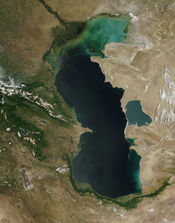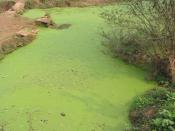Year 10 Extension Science - The Impact of Ph Levels on the Growth of Algae
Nicholas Paraskevas
Background:
An alga is a simple form of plant life that thrives in a wide range of habitats due to its high adaptability. Algae are generally defined as a single celled plant that has the ability to use photosynthesis. Algae are predominantly aquatic organisms; however species do exist that reside in terrestrial habitats. These simple organisms do not posses roots, stems or leaves, that the majority of plants posses. However, algae have the ability to utilise photosynthesis as means of energy, therefore categorizing it as a plant.
Algal blooms occur naturally in both fresh and brackish water. The growth of algae, like the majority of plant life, is dependent on sunlight and sufficient nutrients, however when the conditions for algae are right excessive algal growth occurs, known as 'algal bloom'. Generally, these blooms occur when nutrients such as phosphorus and carbon are plentiful in the water.
However, the ph levels of the water also have a major impact on the growth of algae.
Liquids with a ph of greater than 7 are said to be alkaline, whereas liquids with a ph lower than 7 are said to be acidic. Alkaline waters contain many nutrients that are beneficial to plants, such as calcium, magnesium and potassium that increase the growth of plants by improving their breakdown of carbohydrates, improve cell structure, building of protein and enhance photosynthesis. On the other hand acidic waters reduce the ph of the water and lower the alkalinity, decreasing the available nutrients. Therefore alkaline waters greatly assist in the growth of plant life, such as algae.
Although an essential aspect of aquatic ecosystems, algae can cause a significant threat to agriculture. Algal blooms affect the taste of water, cause...


